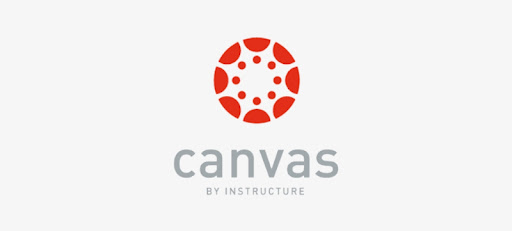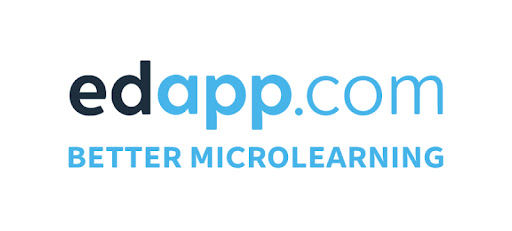An Ultimate Guide To SaaS LMS Development
Software-as-a-service (SaaS) Learning Management System development has transformed how learning and training are delivered in the modern workplace.
The corporate e-learning market has now gained amazing popularity – it has grown by 900% since 2001. Also, by 2025, cloud e-learning will reach a total value of $325 billion.
Businesses can use SaaS LMS platforms to create customized learning experiences by allowing users to access training materials from any device at any time.
The current guide will help you understand what SaaS LMS development entails and how to seamlessly build a successful SaaS-based LMS product.
Let’s dive in!
SaaS LMS – An Overview
A SaaS LMS or Software as a service Learning Management System is a cloud-based software application. That means instead of having on-site software installed, you can access your data from anywhere at any time with an internet connection.
It provides an interface for teaching, managing, and delivering content and courseware. These systems are often used in higher education institutions, vocational schools, and corporate settings.
The idea behind designing these systems is to provide customers with an easy-to-use interface that can be customized based on their needs.
Key Benefits Of SaaS LMS
By choosing the suitable SaaS LMS for your organization, you can use it in numerous ways to help streamline and improve your business.

Find out the key benefits a SaaS LMS can bring to your company.
More Cost Effective Than On-Premise Solution
A Software as a Service (SaaS) solution is more cost-effective than an on-premise solution as it does not require software and hardware installation. It also eliminates the need for expensive maintenance, upgrades, and additional licenses.
If you switch from an on-premise to a Saas LMS solution, you can access your training materials from anywhere with internet access. That means no matter where your employees are; they will always have access to the same content and training.
Easy To Use & User-Friendly
A SaaS LMS is easier to use and more user-friendly. It can be accessed from anywhere worldwide, so your employees won’t have to worry about installing or updating software on their own devices.
They will also be able to log in and out of the system without remembering multiple passwords. Moreover, with all your data stored on the cloud, you don’t have to worry about lost or corrupted files and losing your information.
Reliable & Offers Better Uptime
A SaaS LMS is more reliable and offers better uptime because it is hosted in the cloud. Unlike traditional on-premises software, when your internet connection goes down, you can still access your records from anywhere with an internet connection.
You also don’t have to worry about hardware failures and maintenance costs.
Scalable
A SaaS LMS offers better scalability for small businesses with limited IT resources. If your business is growing or you anticipate significant changes in how your users interact with your software, then this type of system could benefit your business.
The system helps you meet those needs without requiring any upgrades in hardware or infrastructure.
Improved Security
Security is a top concern when choosing a learning management system. With a software as a service (SaaS) LMS, your data is stored in the cloud, and you don’t have to worry about hackers breaking through your firewall.
You do not need to spend any time or money on hardware or networking equipment because it’s all provided by the vendor.
Enhanced Collaboration
Collaboration is key to any organization, and a SaaS LMS makes it easy for businesses to collaborate with their clients, partners, and employees.
The ability to share information in real-time with one another helps generate more ideas and leads to better decision-making.
How To Build A Successful SaaS-Based LMS Product?
When discussing developing a SaaS-based LMS product, there are two ways to consider – in-house development or hiring software experts from IT companies.
In-house development is a little complicated and expensive as you have to build an in-house IT team of experts. Moreover, you must provide sufficient resources and infrastructure to create a product.
Regular maintenance and updates of resources are also necessary. All these things will cost you time and money.
That’s why the second approach is the best to choose.
Several trusted and reputable software development companies available globally can provide you with the best SaaS LMS solution using the latest technologies at affordable rates.
No matter which approach you choose, the following set of steps will help you:
Step 1: Planning
Planning is a crucial part of developing any product. It can be hard to decide from where to begin when building a new product, and getting lost in the details is easy.
The first step in planning is understanding the problem your product will solve and how it will help people. Also, it can help you save money in the long run while building SaaS LMS.
To gain better insights, look for the latest market trends and what your target users are looking for to add value to your product.
In this phase, try to look for the answers to the below set of questions:
Who is your target user?
What do they need from you?
What are their pain points?
How will you solve these problems for them?
What is your budget and time frame?
Identifying this information will help you create a product that solves their needs and also be profitable.
Step 2: Choose The Right SaaS LMS Development Company
Once you have a detailed plan, you can start looking for a trusted SaaS development company to build the final product. While selecting the best company, you should consider the following metrics:
- Total experience in eLearning development
- Additional USPs
- Customer ratings
- Pricing structure
- Quality of service they provide
Step 3: Development & Deployment
After choosing the right business partner for your project, you can move forward with the development and deployment phase. The professional software developer will perform the following steps to build your learning management system:
Phase 1: Outlining all the essential functions and features to be added
Phase 2: Defining scope and SRS creation
Phase 3: UI/UX development
Phase 4: Back-end development process
Phase 5: Quality analysis and testing
Phase 6: Troubleshoot
Phase 7: Deployment
Best SaaS LMS Platform For 2022
Following are the best SaaS LMS platforms to watch out for in 2022 based on their popularity with customers, innovation, and strategic partnerships.
iSpring Learn

iSpring is a cloud-based learning management system developed to help educators and trainers create interactive, engaging, and effective e-learning courses.
The system supports videos, presentations, simulations, quizzes, and assessments to help learners achieve their educational objectives. It offers advanced tools for developers with easy integration with other enterprise systems.
Canvas

Educators mainly use canvas. It has built-in tools that can be customized for educational institutions, businesses, or government agencies.
The platform includes features such as a content management system (CMS), course authoring tools, quizzes with automatic grading in multiple languages, and accessibility features for those with disabilities.
Docebo

With Docebo, you can automate your entire training process. It offers a wide range of branding customization options. Thus, Coca-Cola and the Toronto Blue Jays are two of its biggest clients.
It is a fantastic product for big organizations looking to automate training sessions to maintain their brand identity.
Blackboard learn

Blackboard Learn is one of the market’s most popular SaaS-based learning management systems.
The system has been popular among college and university instructors for over a decade and has also been used extensively in K-12 settings.
EdApp

Edapp helps educators create, manage, and deliver digital content to students.
With EdApp’s Learning Content Management System (LCMS), educators can create their learning modules and provide them through various devices such as laptops, tablets, and mobile phones.
Educators can also integrate EdApp with websites, Google Drive, Microsoft Word documents, PowerPoint presentations, PDF files, audio files, and video files.
Read Also: The Top 5 Digital Marketing Services for SaaS Products
Final Words
We hope this blog post has given you a clear understanding of SaaS Lms development and its benefits for your business.
Many companies are switching to a SaaS model for their Learning Management Systems (LMS). It is because it’s cheaper, more flexible, and all about the business. An important fact to know about SaaS-based learning management systems is that they require an upfront cost but make your life easier in the long run.
You can contact the best software development company and hire software developers to build your learning management system for your business at an affordable pricing structure.



Leave a Reply
You must be logged in to post a comment.